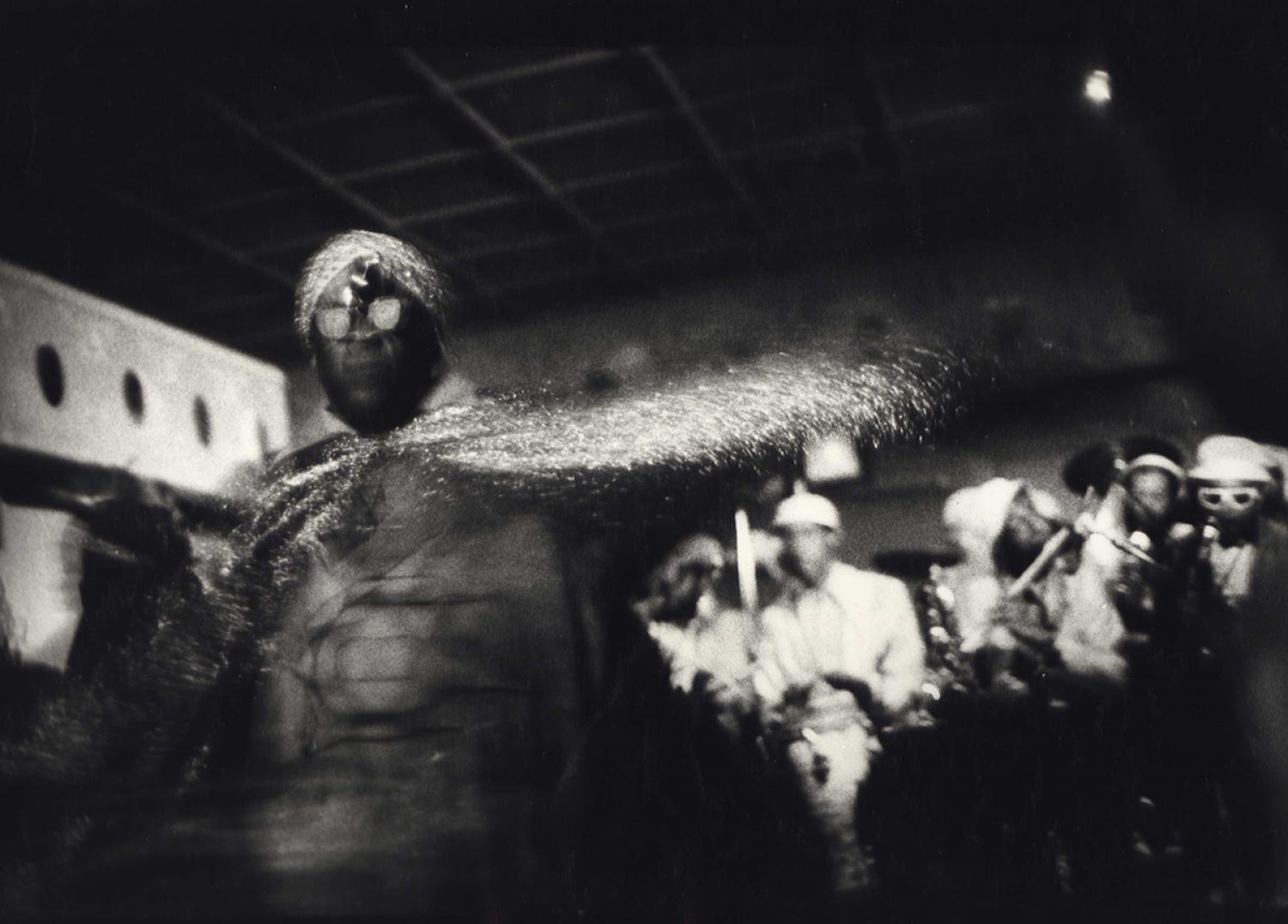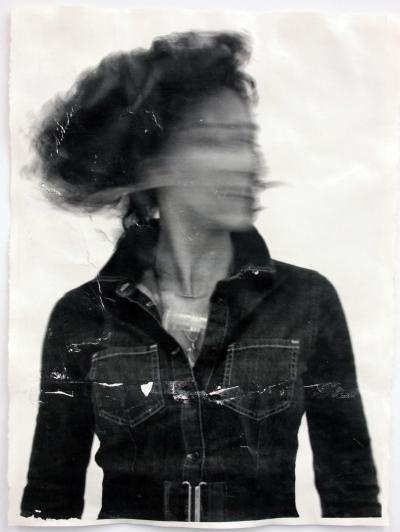 There’s a basic injustice in the worldwide spread of the transparency and the projection of Western thought. Why must we evaluate people on the scale of the transparency of ideas proposed by the West?… As far as I’m concerned, a person has the right to be opaque.
There’s a basic injustice in the worldwide spread of the transparency and the projection of Western thought. Why must we evaluate people on the scale of the transparency of ideas proposed by the West?… As far as I’m concerned, a person has the right to be opaque.
—Édouard Glissant Édouard Glissant, Poetics of Relation, trans. Betsy Wing (Ann Arbor: University of Michigan, 1997), 189.
The invention of the camera offered the means to see and interpret the subject/s depicted. There is also a requirement that the image and the content therein be transparent and easily accessible for viewers’ consumption and comprehension. What happens when the image is deliberately opaque and not easily readable? What if the image is produced so as to be misunderstood and unavailable? We live in a hyper–image–based world where bodies, and more specifically racialized bodies, fall prey to both consensual and non-consensual mass surveillance. The resulting hypervisibility and the ubiquity of images have created vulnerability in the lives of all and people of colour in particular, who are pathologized and open to classification, stereotyping, and misinterpretation. How then can the image be unfixed or blurred from such notions and destabilized in order that it may resist the external pressure of relentless illumination and dissection?
The aesthetic dimension of Édouard Glissant’s thinking is best captured in his concept of opacity. For Glissant, opacity serves as a defence against the objectifying gaze of the other.Glissant, Poetics of Relation.As Celia Britton notes, opacity “resists and contests understanding.”Celia Britton, “Opacity and Transparence: Conceptions of History and the Cultural Difference in the Work of Michel Butor and Édouard Glissant,” French Studies 49, no. 2 (1995): 310.The work of artists Sandra Brewster and Ming Smith both register the guiding principles illustrative of opacity. Canadian artist Brewster’s series It’s All a Blur (2016) features large-scale portraits in which she deliberately obscures the faces of her subjects, denying the viewer complete access to the image. Smith is New York–based photographer who had an active practice during the 1970s through to the 1990s. Smith is known for her shadowy atmospheric photographs which at times concealed parts of her subjects. For both, the images they produce resist easy explication; there is always more than what confronts the viewer at first glance. Their work highlights the ways in which the blurred and unreadable image has been used as a subversive visual tactic.
 Throughout her career, Brewster’s quest has been not only to disrupt fixed notions of Blackness and what it means to be Black in Canada’s diasporic communities, inserting her peers, family members, and larger community into this quest. At the core of her practice are acts of refusal. Working largely in drawing, painting, and mixed-media, she is currently experimenting more with the photographic image. She manipulates and deconstructs photograph surfaces, exposing both materiality and fragility. It’s All a Blur responds to the urgent need to picture subjectivity in ways of our own choosing. Brewster’s choice of photography itself—a “fixed” medium—particularly when combined with the gel-transfer method, provides her with a broad creative scope in the disruption of fixed ideas of Blackness. As Brewster observes, the gel transfer results in myriad outcomes and effects which present a host of possible readings of the work.Julie Crooks, “Sandra Brewster: Practising Refusal,” Prefix 36 (2017).Her insistence on the blurred quality of her subjects’ faces is conceptually and methodologically important. Since the early seventeenth century, the word blur has had a range of definitions and meanings, from “a smear which partially obscures” or “an indistinct appearance” to, in its verbal sense, “to stain, sully, blot the purity or truth of [some]thing.” From its earliest use, the word blur has carried negative associations. Brewster’s use of blurred faces as a motif expresses her desire to resist the objectification of her subjects; she deliberately presents a barrier to the viewer’s apprehension of the subject’s identity.
Throughout her career, Brewster’s quest has been not only to disrupt fixed notions of Blackness and what it means to be Black in Canada’s diasporic communities, inserting her peers, family members, and larger community into this quest. At the core of her practice are acts of refusal. Working largely in drawing, painting, and mixed-media, she is currently experimenting more with the photographic image. She manipulates and deconstructs photograph surfaces, exposing both materiality and fragility. It’s All a Blur responds to the urgent need to picture subjectivity in ways of our own choosing. Brewster’s choice of photography itself—a “fixed” medium—particularly when combined with the gel-transfer method, provides her with a broad creative scope in the disruption of fixed ideas of Blackness. As Brewster observes, the gel transfer results in myriad outcomes and effects which present a host of possible readings of the work.Julie Crooks, “Sandra Brewster: Practising Refusal,” Prefix 36 (2017).Her insistence on the blurred quality of her subjects’ faces is conceptually and methodologically important. Since the early seventeenth century, the word blur has had a range of definitions and meanings, from “a smear which partially obscures” or “an indistinct appearance” to, in its verbal sense, “to stain, sully, blot the purity or truth of [some]thing.” From its earliest use, the word blur has carried negative associations. Brewster’s use of blurred faces as a motif expresses her desire to resist the objectification of her subjects; she deliberately presents a barrier to the viewer’s apprehension of the subject’s identity.
Smith’s work evokes similar qualities of opacity. She was the only original female member of the renowned African American Harlem-based photography collective Kamoinge, founded in 1963. The goal of Kamoinge members was to challenge negative representations of African Americans in photography, particularly within the media. Some early members of Kamoinge included Anthony Barboza and Roy Decarava. In her iconic image of the late jazz Afrofuturist composer Sun Ra entitled Sun Ra space ll (1972), Smith captures the musician during a musical performance. The image takes on an otherworldly quality as Sun Ra’s cape and head gear create sparks of light, while his face and body are indistinct, resulting in an abstract, ephemeral effect. As Maurice Berger suggests, “Ms. Smith’s subjects are often suspended between visibility and invisibility: faces turned away, or are blurred or shrouded in shadow, mist or darkness, a potent metaphor of the struggle for African-American visibility in a culture in which black men and women were disparaged, erased or ignored.”Maurice Berger, “A Photographer Who Made ‘Ghosts’ Visible,” New York Times, January 11, 2017.
Brewster and Smith are undoubtedly preoccupied with opacity and the Black figure in their compelling photographs. The use of blurry, shadowy, murky effects and abstraction can be viewed acts of resistance in relation to the right to knowing the deeper meanings of their images. Their recalcitrant approaches might frustrate those who require or demand full access, yet they take heed of Glissant’s pronouncement that “we need those stubborn shadows [the right to opacity] where repetition leads to perpetual concealment, which is our form of resistance.”Édouard Glissant, Caribbean Discourse: Selected Essays, trans. J. Michael Dash (Charlottesville: University of Virginia, 1989), 4.